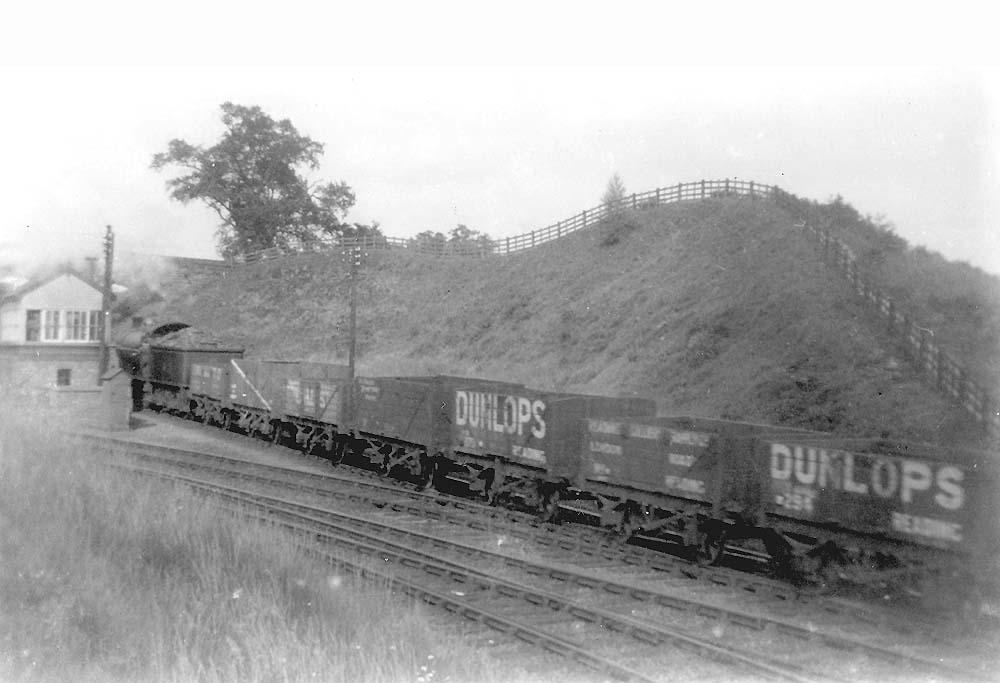|
|
 |
 |
|
London North Western
Railway:

Midland
Railway:

Stratford
Midland Junction Railway
|

|
LMS Route: Nuneaton to Leamington
Kenilworth Junction: lnwrkj203
 |
An unidentified ex-LNWR 0-8-0 'Super D' accelerates from
Kenilworth Junction whilst at the head of a train of empty mineral wagons circa
1935. Unlike open wagons for general merchandise, the railway companies were
not obliged to provide wagons to carry coal, and therefore many owners of
mines, dealers and local coal merchants bought or hired their own fleets of
wagons, and paid fees to the railway companies to haul them. The wagons
gradually increased in capacity, from 6 tons at the dawn of railways, to 16
tons by the late 1940s, and then larger 21 and 24 ton capacity wagons as well.
Some railways promoted the use of hopper wagons, but most favoured a simple
wooden or steel wagon with doors at the sides, and sometimes at one end or in
the floor. Collieries tended to use wagons with all three types of door, so the
coal could be tipped out of the end into ships holds for export, or shoveled
out of the side, or dropped through the floor into chutes between the rails.
Coal merchants tended to use wagons with side doors only, and often their
fleets were much smaller and older than those of the collieries. There was very
strict regulation of the designs and specifications of wagon that could be
built and operated, governed by a collective body of the railway companies
called the Railway Clearing House (RCH).
 back back

|
|
|
